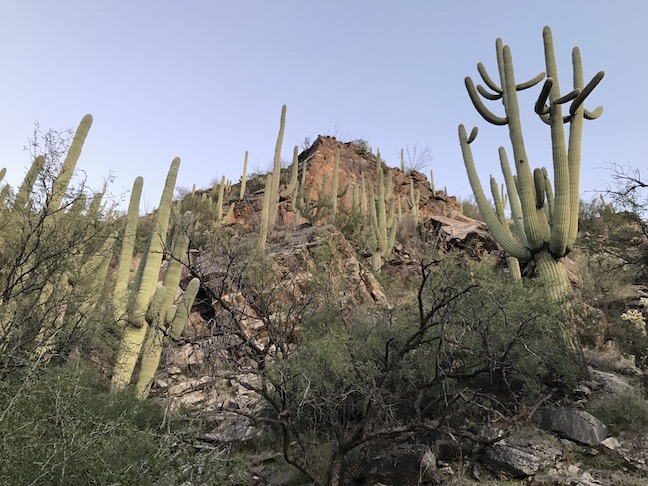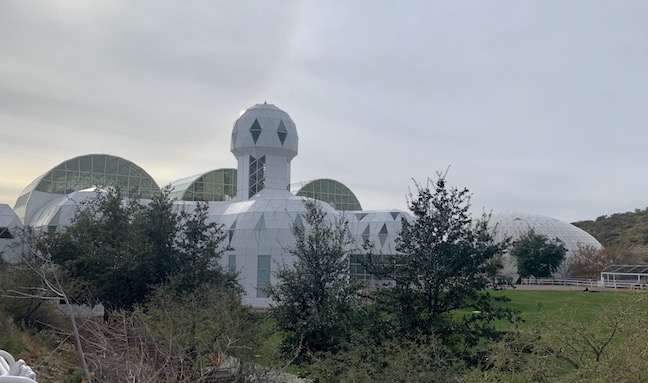After a rainy January, thoughts of sunny getaways fill the minds of many Oregonians. Despite being a lifelong Portlander, I’m no different, so a recent trip to Tucson was a welcome break. We ate a lot of great food; the whole town has a UNESCO food designation, and breakfast at the Hotel Congress is not to be missed. We also got to take in some fascinating attractions and learn more about the Sonoran Desert.

There are plants with no leaves! There’s no need for them in the harsh desert sun. A Sonoran plant photosynthesizes all its energy with far less chlorophyll, and thin leaves are a liability for moisture loss. In fact, the spines of some varieties of cactus actually reflect the sun to minimize its harsh effects.
Unlike a rainforest, desert plants aren’t competing to get to the top of the forest canopy. Without water, things grow so slowly there’s no competition for the sun. It takes 10 years for a saguaro cactus to reach a height of just one inch, and another 60 for it to to reach full height. Want some side branches on that cactus, like you see on postcards? You’ll have to wait another 20 years.
And yet… there are hundreds of plants and animals that are perfectly at home there. Could humans build a comparable environment to sustain themselves, using only the elements of sun, water, soil, and air?

In the early 1990s, one imaginative millionaire tried to do just that. Biosphere 2 (so named because the founders considered Earth to be Biosphere 1) was an optimistic attempt to build a self-sufficient, closed environment. Funded by Texas oil heir Ed Bass, organizers designed a human colony that recirculated its own water, generated its own oxygen and food, and recycled its own waste in one sustainable biome. They built it in Arizona, where there was plenty of sun for growing plants. Seven hardy individuals agreed to test the theory by locking themselves in this metal and glass cage for two years. If you consider yourself Gen-X or older, you may remember how Biosphere 2 worked out (it’s not a happy ending).
For starters, the weather that winter was cloudy, so the crops didn’t grow very well. That created an unpleasant shortage of food for the Biospherians, who ended up losing an average of 18% of their body weight over the course of the two-year experiment. (Based on body composition, blood pressure, cholesterol and blood sugar, they came out healthier, the mission physician cheerfully observed.)

More problems ensued: The structure — basically an enormous greenhouse with a built-in sea and multiple microclimates — quickly fell out of atmospheric balance. Too little oxygen was produced and too much carbon dioxide was generated, creating profoundly unhealthy conditions. At one point, the Biospherians experienced oxygen levels comparable to a 13,500 altitude, necessitating an emergency injection of thousands of pounds of liquid oxygen. An overabundance of CO2 (think 4500 PPM, when 1,000 is considered elevated!) required the secret installation of a CO2 scrubber like they have on spacecraft.
Biosphere 2 was an irresistible combination of hubris and failure. Despite the pre-social media era, news outlets had a glorious time building the story up, and then tearing it down. But the experiment later produced some of the first research on climate change, showing how oceans acidify as they absorb CO2 from a warming planet. In fact, the very inability of Biosphere 2 to achieve its core objective underscores the tremendous value of healthy, natural ecosystems in sustaining human life.
In the meantime, we’re still waiting for that CO2 scrubber for Biosphere 1.
